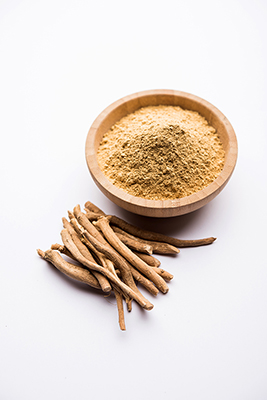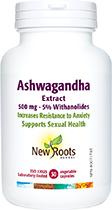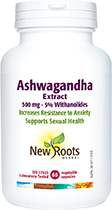Just WEIGHT till You Turn 50! Why Managing Weight Feels Harder as We Age and What Can Be Done about It
Our bodies are constantly changing, and this can be especially noticeable as we age. One of the more common concerns people encounter as they approach their 50s is that weight management is increasingly hard. As it is a common-enough experience, weight issues are often thought of as normal, even more so as we age.
Understanding the Basics
Weight is a body’s relative mass, or the quantity of matter contained by it, giving rise to a downward force. In essence, weight is the measure of how heavy a person or object is.
It is a simple and an objective marker, but how we use weight in the context of health management is complex.
Health-care practitioners generally use body mass index (BMI) and waist circumference to screen someone’s risk of disease in relation to weight. These measures are inexpensive and convenient, but they provide a limited understanding of someone’s health. They overlook significant factors such as muscle mass, ethnicity, body fat composition, and physical activity, all of which collectively influence body weight.
Understanding Fluctuations
People experience vastly differing circumstances throughout life. A variety of factors can influence body weight including genetics, sleep hygiene, emotional adaptability and resilience to stressors, hormonal fluctuations, medication usage, access to food and eating habits, level of physical activity, transitional life events, history of illnesses and medical conditions, as well as digestion and nutrient absorption.[i], [ii]
The Menopause Effect
For people approaching menopause, notable changes in body composition are observed and sometimes associated with risks of development of osteoporosis and metabolic syndrome. The general decrease of endogenous estrogen levels—in combination with decreased androgen and growth hormone levels, lifestyle change, etc.—commonly results in weight gain and remarkable changes in fat distribution.[iii]
 Aging and Changes in Body Composition
Aging and Changes in Body Composition
Aging can influence digestive function, nutrient absorption, and shifts in energy storage. The gradual loss of lean muscle mass accompanied by an increase in body fat is characteristic of the natural aging process.[iv], [v], [vi], [vii] Fat location or distribution and muscle quality also change with age. In general, most people maintain their body weight until a period of accelerated body-composition change occurs. Waist circumference and visceral fat increase with age at a greater rate than total weight.[viii], [ix]
Other markers of bodily function have also been examined in relation to aging, particularly resting metabolic rate (RMR) and substrate oxidation rates. The reductions in the mass of individual organs and tissues as well as in tissue-specific organ metabolic rates impart a reduction in RMR and, consequently, changes in body composition that lead to increased fat mass and reduced fat-free mass.[x]
The cumulative effects of aging’s impact on digestive function—such as reduced appetite and colonic motility; neurohormonal changes including insulin resistance; as well as psychosocial factors like isolation, dementia, and food insecurity—can have a direct impact on overall energy intake, nutritional status, body composition, and weight.[xi]
Impacts of Cortisol
Resilience to stressors may also be influential in body-composition changes. There are ongoing explorations of elevated exposure to cortisol—known as the “stress hormone” produced by the adrenal glands—and its relation to overall body composition. It seems that the overall dynamic as to how cortisol plays a role in weight management is more complicated than we thought.
In men aged 40 to 79 years old, a study noted that weight fluctuations drove changes in cortisol concentrations, rather than vice versa.[xii] Among women aged 18 to 45 years old, cortisol levels were also measured in relation to different ranges within the weight spectrum (anorexia nervosa, normal-weight controls, and overweight or obese). Extreme underweight and overweight states were shown to activate the hypothalamic-pituitary-adrenal (HPA) axis, and high cortisol levels may contribute to increased fat storage, decreased bone mineral density, and muscle wasting in both caloric restriction and excess.[xiii]
How to Achieve a “Healthy” Weight
Nutraceuticals may be useful tools in achieving a healthy body weight. Some nutrients are known to exert actions which may improve factors that potentially influence body weight or body composition.
 Ashwagandha Extract
Ashwagandha Extract
Ashwagandha (Withania somnifera) extract has been noted to modestly improve fatigue, vigour, and testosterone levels in aging, overweight males.[xiv] In another study, ashwagandha extract was shown to significantly reduce physical symptoms of fatigue, muscle pain, palpitations, and sleeplessness, as well as clinical markers of stress like serum cortisol, CRP, VLDL‑C, and blood pressure.[xv]
Dietary Fibre Supplements
Fibre supplements are also used therapeutically in weight management for improving lipid profile, blood-sugar regulation, digestion, and potentially reducing inflammation. In a study investigating the impact of energy restriction (calorie deficit) in combination with dietary fibre supplements, results showed changes in body weight as well as other metabolic markers in overweight or obese men and women aged 40 to 60 years old. Hence, incorporating dietary fibre supplements could be a practical method to enhance both weight and metabolic health for people dealing with obesity and overweight conditions.[xvi]
The Need for a Holistic Approach to Weight Loss
Achieving a healthy body weight is a complex undertaking and is not as straightforward as just meeting an “ideal weight” goal. A person’s “healthy weight” should always be evaluated in the context of other parameters that determine health and disease risk such as blood pressure, blood sugar levels, lipid panels, waist and hip circumferences, self-esteem, quality of life, nutrition status, and physical activity. This method of promoting health follows a weight-neutral approach that is supportive, achievable, sustainable, and individualized—just as how uniquely our bodies change.[xvii]
 Dr. Kim Abog, ND
Dr. Kim Abog, ND
Dr. Kim Abog is a registered naturopathic doctor and doula based in Toronto, Ontario. She has a special interest in fertility and reproductive health. She helps people by facilitating health-management plans with them, connecting them to evidence-informed integrative health solutions, and helping them thrive.
kimabog.com
References
[i] Kushner, R.F., J.A. Batsis, W.S. Butsch, N. Davis, A. Golden, F. Halperin, S. Kidambi, et al. “Weight history in clinical practice: The state of the science and future directions.” Obesity, Vol. 28, No. 1 (2020): 9–17.
[ii] [No authors listed.] “Factors affecting weight & health.” National Institute of Diabetes and Digestive and Kidney Diseases, May 2023 · https://www.niddk.nih.gov/health-information/weight-management/adult-overweight-obesity/factors-affecting-weight-health
[iii] Kirchengast, S., D. Gruber, M. Sator, and J. Huber. “Postmenopausal weight status, body composition and body fat distribution in relation to parameters of menstrual and reproductive history.” Maturitas, Vol. 33, No. 2 (1999): 117–126.
[iv] Alley, D.E., L. Ferrucci, M. Barbagallo, S.A. Studenski, and T.B. Harris. “A research agenda: The changing relationship between body weight and health in aging.” The Journals of Gerontology. Series A, Biological Sciences and Medical Sciences, Vol. 63, No. 11 (2008): 1257–1259.
[v] Kirchengast et al. op. cit.
[vi] Kuk, J.L., T.J. Saunders, L.E. Davidson, and R. Ross. “Age-related changes in total and regional fat distribution.” Ageing Research Reviews, Vol. 8, No. 4 (2009): 339–348.
[vii] Newberry, C., and G. Dakin. “Nutrition and weight management in the elderly.” Clinics in Geriatric Medicine, Vol. 37, No. 1 (2021): 131–140.
[viii] Alley et al. op. cit.
[ix] Kuk et al. op. cit.
[x] St‑Onge, M.P., and D. Gallagher. “Body composition changes with aging: The cause or the result of alterations in metabolic rate and macronutrient oxidation?” Nutrition, Vol. 26, No. 2 (2010): 152–155.
[xi] Newberry and Dakin. op. cit.
[xii] Travison, T.G., A.B. O’Donnell, A.B. Araujo, A.M. Matsumoto, and J.B. McKinlay. “Cortisol levels and measures of body composition in middle-aged and older men.” Clinical Endocrinology, Vol. 67, No. 1 (2007): 71–77.
[xiii] Schorr, M., E.A. Lawson, L.E. Dichtel, A. Klibanski, and K.K. Miller. “Cortisol measures across the weight spectrum.” The Journal of Clinical Endocrinology and Metabolism, Vol. 100, No. 9 (2015): 3313–3321.
[xiv] Lopresti, A.L., P.D. Drummond, and S.J. Smith. “A randomized, double-blind, placebo-controlled, crossover study examining the hormonal and vitality effects of ashwagandha (Withania somnifera) in aging, overweight males.” American Journal of Men’s Health, Vol. 13, No. 2 (2019): 1557988319835985.
[xv] Auddy, B., J. Hazra, A. Mitra, B.G. Abedon, S. Ghosal, and B. Nagar. “A standardized Withania somnifera extract significantly reduces stress-related parameters in chronically stressed humans: a double-blind, randomized, placebo-controlled study.” Journal of the American Nutraceutical Association, Vol. 11, No. 1 (2008): 50–56.
[xvi] Jenko Pražnikar, Z., N. Mohorko, D. Gmajner, S. Kenig, and A. Petelin. “Effects of four different dietary fibre supplements on weight loss and lipid and glucose serum profiles during energy restriction in patients with traits of metabolic syndrome: A comparative, randomized, placebo-controlled study.” Foods, Vol. 12, No. 11 (2023): 2122.
[xvii] Schorr et al. op. cit.

 Stores
Stores

